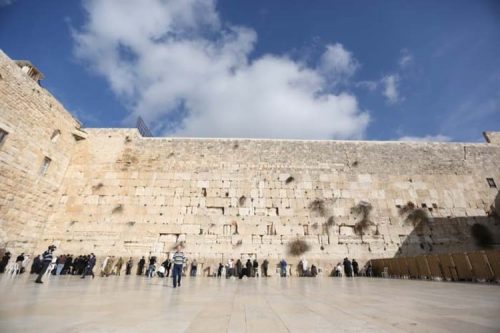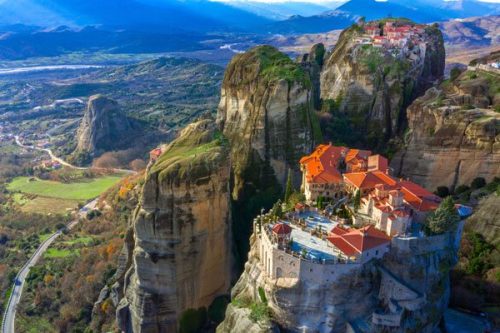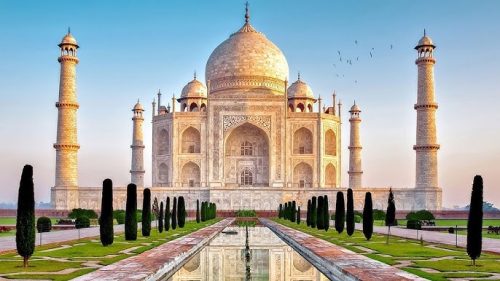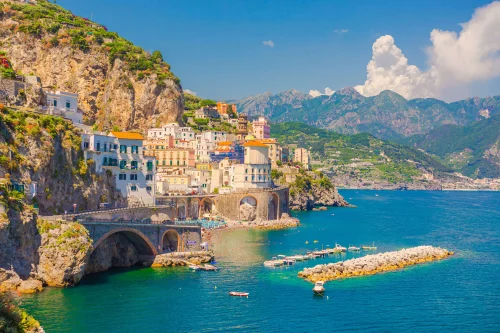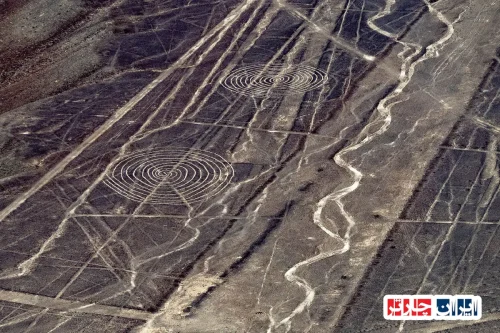Discover the Natural Beauty of Lake Nakuru in Nakuru County, Kenya
Lake Nakuru in Nakuru County, Kenya, is one of the most breathtaking natural wonders in East Africa, renowned for its vibrant flamingo populations, diverse wildlife, and stunning landscapes. This iconic lake, situated within the Nakuru National Park, offers visitors an unforgettable experience of wildlife viewing, birdwatching, and exploring the rich ecological heritage of Kenya. The lake’s alkaline waters support an abundance of microorganisms that attract millions of flamingos, creating a spectacular pink hue that can be seen from miles away. Beyond the flamingos, the park is home to a variety of animals including rhinos, lions, leopards, giraffes, and zebras, making it a prime destination for safari enthusiasts. The surrounding landscape features lush savannahs, acacia trees, and scenic viewpoints that provide perfect spots for photography and relaxation. Visiting Lake Nakuru in Nakuru County, Kenya, not only offers a chance to witness extraordinary wildlife but also to learn about conservation efforts aimed at protecting this vital ecosystem. Whether you’re interested in birdwatching, photography, or simply immersing yourself in nature, Lake Nakuru stands out as a must-see destination that embodies the natural beauty and ecological significance of Kenya. For more information and booking, visit Lake Nakuru-Iran Charter. Experience the magic of Lake Nakuru and discover why it is considered one of Kenya’s most treasured natural sites.
Discover the Natural Beauty of Lake Nakuru in Nakuru County Kenya
Lake Nakuru, located in Nakuru County Kenya, is renowned for its stunning scenery and rich biodiversity. Surrounded by lush vegetation and vibrant wildlife, this iconic lake offers visitors an unforgettable experience. The area boasts a diverse range of flora and fauna, making it a prime destination for nature lovers and photographers alike. The breathtaking landscapes include rolling hills, acacia trees, and scenic viewpoints that highlight the lake’s scenic beauty. Visitors can enjoy birdwatching, especially the famous pink flamingos that flock to the lake, creating a mesmerizing spectacle. The pristine environment and tranquil waters provide a perfect escape into nature’s serenity, making Lake Nakuru a must-visit spot in Kenya.
The Unique Ecosystem of Lake Nakuru in Nakuru County Kenya
The ecosystem surrounding Lake Nakuru in Nakuru County Kenya is a delicate balance of aquatic and terrestrial habitats. The lake’s alkaline waters support a variety of microorganisms, including the algae that attract thousands of flamingos. This vibrant birdlife is a key feature of the lake’s ecosystem, drawing birdwatchers from around the world. The surrounding national park is home to diverse wildlife such as rhinos, lions, giraffes, and zebras, thriving in the protected environment. The lush grasslands and acacia woodlands provide essential food and shelter for these animals. Conservation efforts in Nakuru County Kenya have been crucial in maintaining this rich biodiversity, ensuring that future generations can continue to enjoy this natural wonder.
Why Lake Nakuru in Nakuru County Kenya is a Birdwatcher’s Paradise
Lake Nakuru in Nakuru County Kenya is famous for its vast congregation of flamingos, which turn the lake into a sea of pink during peak seasons. The lake’s shallow, alkaline waters create an ideal habitat for algae, the primary food source for these birds. Besides flamingos, the area hosts over 400 bird species, including pelicans, storks, kingfishers, and herons. The abundance of birdlife makes it one of Africa’s top birdwatching destinations. Bird enthusiasts can enjoy guided tours that provide insights into the behavior and ecology of these species. The spectacular sight of millions of flamingos, combined with the diversity of other bird species, cements Lake Nakuru’s reputation as a birdwatcher’s paradise in Nakuru County Kenya.
Conservation and Challenges Facing Lake Nakuru in Nakuru County Kenya
Efforts to conserve Lake Nakuru in Nakuru County Kenya have been vital in protecting its unique biodiversity. The establishment of the national park has helped safeguard the habitat of many endangered species, including the black rhinoceros and Rothschild’s giraffe. However, the lake faces challenges such as pollution, water level fluctuations, and encroachment from human activities. Climate change has also impacted the water levels, affecting the habitat of flamingos and other wildlife. Local authorities and conservation organizations are working together to implement sustainable practices, control illegal activities, and promote eco-tourism. Maintaining the ecological balance of Lake Nakuru is essential for preserving its status as a vital ecological site in Kenya.
Best Time to Visit Lake Nakuru in Nakuru County Kenya for Wildlife Viewing
The optimal time to visit Lake Nakuru in Nakuru County Kenya is during the dry season, from June to October, when wildlife is most visible and the weather is favorable. During this period, the water levels are lower, concentrating animals around the lake and making sightings easier. The flamingos are also abundant during these months, creating a spectacular view. The wet season, from November to May, brings lush landscapes and migratory bird species, offering a different but equally rewarding experience. Planning your visit according to the season ensures you witness the diverse wildlife and scenic beauty that Lake Nakuru has to offer.
Activities and Attractions at Lake Nakuru in Nakuru County Kenya
Visitors to Lake Nakuru in Nakuru County Kenya can enjoy a variety of activities, including game drives, birdwatching, and photography. The park’s well-maintained roads allow for close-up views of wildlife such as rhinos, lions, and giraffes. Birdwatchers can spend hours observing the myriad of bird species, especially the flamingos and pelicans. Guided nature walks and boat trips are also popular, providing a different perspective of the lake’s ecosystem. Additionally, the scenic viewpoints and picnic spots offer perfect settings for relaxation and appreciating the natural beauty. The park’s diverse attractions make it an ideal destination for adventure seekers and nature enthusiasts alike.
How to Access Lake Nakuru in Nakuru County Kenya and Accommodation Options
Lake Nakuru in Nakuru County Kenya is easily accessible from Nairobi, approximately a 2-3 hour drive via well-maintained roads. Visitors can choose to fly into nearby airports and then drive to the park. Accommodation options range from luxury lodges and tented camps to budget hotels and guesthouses near the park. Many lodges offer guided tours, game drives, and other amenities to enhance the visitor experience. It is advisable to book accommodations in advance, especially during peak seasons. Local tour operators can assist with transportation, park entry permits, and customized safari packages, ensuring a smooth and enjoyable visit to Lake Nakuru.
The Role of Lake Nakuru in Kenya’s Environmental Conservation
Lake Nakuru plays a crucial role in Kenya’s broader environmental conservation efforts. As a designated national park and UNESCO biosphere reserve, it serves as a model for sustainable tourism and habitat preservation. The lake’s ecosystem supports endangered species and maintains ecological balance in the region. Conservation programs focus on habitat restoration, anti-poaching measures, and community engagement to promote eco-friendly practices. The success of Lake Nakuru’s conservation initiatives highlights the importance of protecting natural resources for future generations and underscores Kenya’s commitment to environmental sustainability.
Planning Your Trip to Lake Nakuru in Nakuru County Kenya: Tips and Recommendations
To make the most of your visit to Lake Nakuru in Nakuru County Kenya, plan ahead by choosing the best time of year, booking accommodations early, and arranging guided tours. Carry essential items such as binoculars, camera equipment, sun protection, and appropriate clothing for outdoor activities. Respect the wildlife and follow park regulations to ensure safety and conservation. Engaging with local guides enriches the experience by providing valuable insights into the flora and fauna. Whether you’re interested in birdwatching, photography, or simply enjoying the scenic landscapes, proper planning guarantees a memorable and responsible adventure at Lake Nakuru.
Frequently Asked Questions
- What makes Lake Nakuru a popular tourist destination in Kenya?
- Lake Nakuru is renowned for its stunning scenery, vibrant birdlife, especially the millions of flamingos that turn the lake into a pink spectacle. The diverse wildlife, including rhinos, giraffes, and lions within the surrounding national park, along with scenic viewpoints and lush vegetation, make it a must-visit for nature lovers and photographers alike.
- What is the unique ecosystem of Lake Nakuru?
- The lake’s alkaline waters support algae and microorganisms that attract large flocks of flamingos. The surrounding habitat includes grasslands and acacia woodlands that host diverse animals like rhinos, giraffes, zebras, and predators, creating a delicate balance of aquatic and terrestrial ecosystems.
- Why is Lake Nakuru considered a birdwatcher’s paradise?
- With over 400 bird species, including the famous pink flamingos, pelicans, storks, and kingfishers, Lake Nakuru offers exceptional opportunities for birdwatching. The abundance of birdlife, especially during peak seasons, attracts enthusiasts from around the world.
- What are the main conservation challenges facing Lake Nakuru?
- Challenges include pollution, fluctuating water levels, illegal encroachment, and climate change impacts. Conservation efforts focus on habitat preservation, anti-poaching measures, and sustainable tourism to protect this vital ecosystem.
- When is the best time to visit Lake Nakuru for wildlife viewing?
- The dry season from June to October offers optimal wildlife sightings, as animals gather around the shrinking water sources. The flamingos are also most abundant during these months, providing spectacular views. The wet season from November to May brings lush landscapes and migratory bird species, offering a different experience.
- What activities can visitors enjoy at Lake Nakuru?
- Popular activities include game drives, birdwatching, photography, guided nature walks, and boat trips. Scenic viewpoints and picnic spots are also available for relaxation and enjoying the natural beauty.
- How can I access Lake Nakuru and what accommodation options are available?
- Lake Nakuru is accessible via a 2-3 hour drive from Nairobi. Visitors can choose from luxury lodges, tented camps, budget hotels, and guesthouses near the park. Pre-booking is recommended, especially during peak seasons. Local tour operators can assist with transportation and safari packages.
- What role does Lake Nakuru play in Kenya’s environmental conservation?
- As a UNESCO biosphere reserve and national park, Lake Nakuru exemplifies sustainable tourism and habitat preservation. It supports endangered species and promotes ecological balance, serving as a model for conservation efforts in Kenya.
- What tips should travelers consider when planning a trip to Lake Nakuru?
- Plan ahead by choosing the best season, book accommodations early, and arrange guided tours. Carry essentials like binoculars, cameras, sun protection, and appropriate clothing. Respect wildlife and park regulations to ensure a safe and responsible visit.
- Are there any cultural or community activities around Lake Nakuru?
- While primarily a natural attraction, nearby communities often engage in eco-tourism initiatives, cultural visits, and local crafts. Supporting community-based projects helps promote sustainable development and conservation awareness.
- What is the significance of flamingos to Lake Nakuru?
- The flamingos are a key feature of Lake Nakuru’s ecosystem, feeding on algae in the alkaline waters. Their large flocks create a mesmerizing pink landscape, attracting tourists and birdwatchers, and highlighting the lake’s ecological health.
- How does climate change affect Lake Nakuru?
- Climate change impacts water levels, leading to habitat fluctuations for flamingos and other wildlife. Droughts and irregular rainfall patterns threaten the delicate balance of the ecosystem, emphasizing the need for conservation and sustainable practices.
- What are the main species of wildlife besides birds at Lake Nakuru?
- Besides the abundant birdlife, the park is home to black and white rhinoceroses, Rothschild’s giraffes, lions, zebras, baboons, and various antelope species, making it a diverse safari destination.
- Can I visit Lake Nakuru as a day trip from Nairobi?
- Yes, it is possible to visit Lake Nakuru as a day trip, with guided tours departing from Nairobi. However, for a more immersive experience, staying overnight allows better exploration of the park and surrounding areas.
- What should I know about safety and park regulations at Lake Nakuru?
- Follow park rules, stay inside designated areas, and avoid feeding or disturbing wildlife. It’s advisable to travel with a guide, keep windows closed during game drives, and carry necessary permits and identification for a safe visit.









